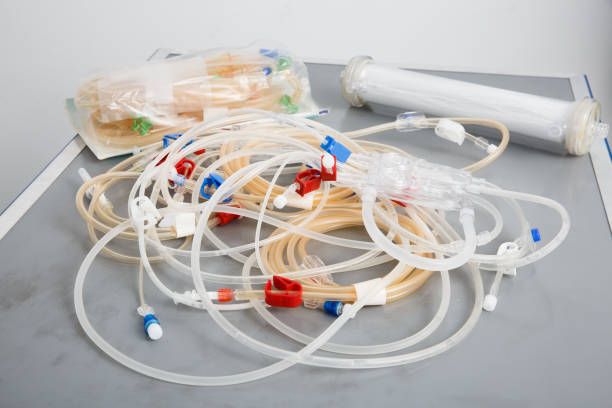In hemodialysis, precision and safety are paramount. Among the critical components that make the treatment effective is the bloodline for hemodialysis. While the dialysis machine performs the filtration process, the hemodialysis bloodline is the pathway that ensures patient blood flows safely in and out of the dialyzer. For hospitals, clinics, and medical distributors, understanding the design, parts, and applications of these consumables is key to making informed purchasing decisions.

The bloodline for dialysis is a sterile, disposable tubing set that connects the patient’s vascular access to the hemodialysis machine. It provides the controlled circuit needed to clean blood through dialysis, carrying it to the dialyzer for filtration and returning it safely to the patient.
A bloodline set for hemodialysis functions as part of a closed-loop extracorporeal circulation system:
Arterial line – Draws blood from the patient into the dialyzer.
Dialyzer connection – Transfers blood through the dialyzer where toxins and waste are filtered out.
Venous line – Returns the filtered blood back to the patient.
Without the bloodline, hemodialysis would not be possible, as the tubing ensures a safe, sterile environment for blood transport during treatment.
The parts of dialysis bloodlines vary slightly depending on the manufacturer but generally include:
Arterial bloodline – with connectors for venous access needles.
Venous bloodline – equipped with drip chambers, clamps, and air-detection sensors.
Drip chambers – for monitoring and preventing air bubbles from entering circulation.
Injection sites – for administering medications or anticoagulants during dialysis.
Luer lock connectors – ensuring secure attachment to vascular access and dialyzer.
Each part plays a vital role in maintaining safe and uninterrupted blood flow.
When sourcing hemodialysis bloodlines, hospitals and procurement teams should consider:
Sterility and biocompatibility – to protect patients from infection and adverse reactions.
Compatibility with machines – bloodlines must match the specifications of commonly used dialysis machines.
Durability of tubing material – ensuring resistance to kinking or collapse during sessions.
Regulatory compliance – ISO and CE-certified bloodlines for dialysis provide assurance of safety and performance.
While the dialyzer is often considered the “artificial kidney,” the bloodline for hemodialysis is equally critical. It acts as the safe bridge between the patient and the machine. Without high-quality bloodlines, the entire process of using dialysis to clean blood would be compromised, potentially risking patient safety and treatment efficacy.
The hemodialysis bloodline may seem like a simple disposable product, but it is a lifeline for patients undergoing treatment. From arterial and venous tubing to injection sites and drip chambers, every part of the bloodline set for hemodialysis ensures that dialysis functions smoothly and safely. For medical institutions and distributors, choosing reliable, compliant, and cost-effective bloodlines for dialysis is essential to guarantee patient care and streamline procurement. CONTACT US FOR A FREE QUOTE.